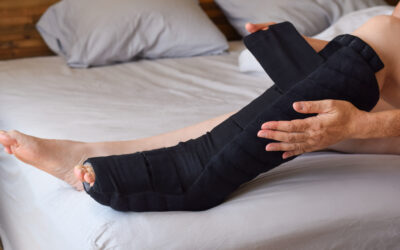Chronic pain, defined as persistent discomfort lasting beyond the expected recovery period, affects millions globally. Its repercussions span beyond the physical, often infiltrating mental and emotional well-being. As patients and practitioners search for effective treatments beyond medication, physical therapy, massage therapy, and acupuncture have emerged as primary avenues for both relief and recovery.
Chronic pain, whether stemming from an injury, an underlying medical condition, or unknown origins, demands an intricate understanding and approach. Prolonged reliance on medication might offer temporary relief, but it’s not without side effects or the risk of dependence. The focus, thus, shifts to integrative therapies that address the pain and its root causes.
Physical Therapy: Building Strength and Mobility
At the forefront of non-pharmacological interventions is physical therapy, offering a patient-specific approach:
- Individualized Exercise Programs: Physical therapists design routines that strengthen muscles, enhance flexibility, and promote endurance, all of which can alleviate and prevent pain.
- Manual Techniques: Through hands-on methods like soft tissue and joint mobilization, therapists can reduce muscle tightness, improve circulation, and enhance joint function.
- Pain Modulating Modalities: Techniques like ultrasound, heat therapy, cold packs, and transcutaneous electrical nerve stimulation (TENS) can be beneficial in managing acute pain flare-ups.
- Education and Self-management: Therapists empower patients with knowledge about their conditions, pain management strategies, and self-help techniques.
Massage Therapy: The Power of Touch
Rooted in age-old traditions, massage therapy has evolved into a recognized pain management modality:
- Deep Tissue Massage: By applying sustained pressure, therapists target deep layers of muscles and fascia, releasing chronic tension.
- Trigger Point Therapy: Focuses on specific points of muscle tension, offering targeted relief.
- Swedish Massage: A more gentle approach, it relaxes the entire body, promoting circulation and overall well-being.
- Lymphatic Drainage: This technique helps reduce swelling and improves the functioning of the lymphatic system, which can be particularly beneficial for certain chronic pain conditions.
Acupuncture: Ancient Needles, Modern Relief
Harnessing principles from traditional Chinese medicine, acupuncture offers a unique approach:
- By inserting thin needles at specific points, acupuncture aims to rebalance the body’s energy flow, promoting natural healing and pain relief.
- Beyond just pain, acupuncture also addresses associated symptoms like insomnia or anxiety, offering a comprehensive treatment approach.
- Modern adaptations, like electroacupuncture, where mild electric current is passed through needles, amplify the pain-relieving effects.
Navigating the Journey of Chronic Pain
Living with chronic pain is a journey of resilience, understanding, and adaptability. While one therapeutic approach might work for one individual, another might benefit from a combination. The key lies in open communication with healthcare providers, exploring different modalities, and being proactive in self-care.
Chronic pain, though complex, isn’t insurmountable. With avenues like physical therapy, massage therapy, and acupuncture, there exists a hope for relief, recovery, and rejuvenation. As the medical community continues to embrace and research these methods, chronic pain sufferers have more than just hope; they have a path to a more comfortable life.



